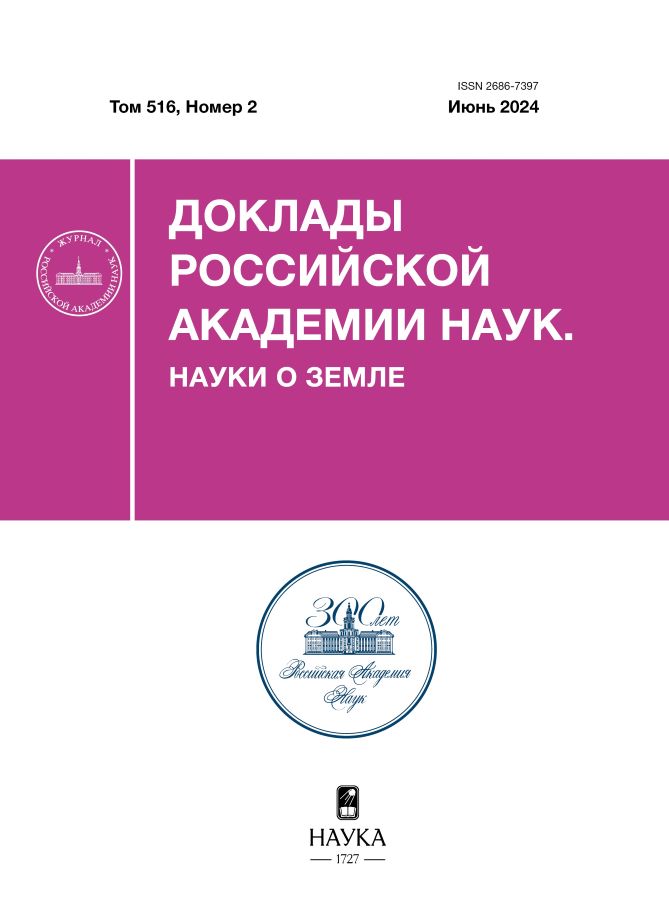Experience in applying probabilistic approaches in predicting the level regime of the Marmarik River
- Authors: Sumachev A.E.1, Gaidukova E.V.2, Margaryan V.G.3, Sedrakyan A.M.4
-
Affiliations:
- St. Petersburg State University
- Russian State Hydrometeorological University
- Yerevan State University
- National Polytechnic University of Armenia
- Issue: Vol 516, No 2 (2024)
- Pages: 662-670
- Section: LAND WATERS PROBLEMS
- Submitted: 31.01.2025
- Published: 12.12.2024
- URL: https://edgccjournal.org/2686-7397/article/view/650056
- DOI: https://doi.org/10.31857/S2686739724060202
- ID: 650056
Cite item
Abstract
The possibility of short-term and long-term forecasting of water levels, including those associated with dangerous hydrological phenomena on the Marmarik River, using various probabilistic approaches, including regression dependencies, an integrated moving average autoregression model, and multilayer perceptron models, is considered. To evaluate the effectiveness of prognostic methods, the statistical parameters of a random process are calculated, while recommendations are given using the classical criteria for the effectiveness of issued forecasts. For long-term forecasting, the expediency of using the integrated moving average autoregression model was assessed, while it is noted that these models in the classical representation are not applicable due to time gaps, and therefore it is recommended to focus on the mathematical expectation of a random process. For short-term forecasting one or two steps ahead, the method of training artificial neural networks was used. The analysis carried out in the work revealed that in the case of short-term forecasting of water levels for one period in advance (12 hours), it is most expedient to focus on the value of the water level attributable to the date of issue of the forecast, the standard error of such a forecast is 5 cm. For a 24-hour water level forecast forward, it is expedient to develop neural network forecasting models, taking into account the development of the situation on Gomraget―Meghradzor. A further increase in the quality of the outputs is possible when using data for a longer observation period and a whole year. At the same time, as an alternative to neural network forecasting models, physical and mathematical (hydraulic) models of the formation of water levels can be used.
Full Text
About the authors
A. E. Sumachev
St. Petersburg State University
Author for correspondence.
Email: a-sumachev@mail.ru
Russian Federation, St. Petersburg
E. V. Gaidukova
Russian State Hydrometeorological University
Email: oderiut@mail.ru
Russian Federation, St. Petersburg
V. G. Margaryan
Yerevan State University
Email: vmargaryan@ysu.am
Armenia, Yerevan
A. M. Sedrakyan
National Polytechnic University of Armenia
Email: asedrakyan@seua.am
Armenia, Yerevan
References
- Маргарян В. Г., Гайдукова Е. В., Азизян Л. В., Мисакян А. Э. Особенности формирования весеннего половодья в бассейне реки Арпа // Водное хозяйство России: проблемы, технологии, управление. 2021. № 3. С. 126–152.
- Маргарян В. Г., Гайдукова Е. В., Азизян Л. В., Хаустов В. А. О прогнозе максимальных расходов весеннего половодья реки Арпа // Водное хозяйство России: проблемы, технологии, управление. 2022. № 3. С. 75–87. https://doi.org/10.35567/19994508_2022_3_6
- Георгиевский Ю. М., Шаночкин С. В. Прогнозы стока горных рек. Л.: ЛГМИ, 1987. 55 с.
- Христофоров А. В., Юмина Н. М., Белякова П. А. Прогноз паводкового стока рек черноморского побережья кавказа с заблаговременностью одни сутки // Вестн. Моск. ун-та. Сер. 5. География. 2015. № 3. С. 50–57.
- Борщ С. В., Симонов Ю. А. Оперативная система краткосрочных гидрологических прогнозов расхода воды на реках бассейна Кубани // Тр. Гидрометцентра России. 2013. Вып. 349. С. 63–87.
- Болтабаев В. Г., Овчинников А. М. Краткосрочные прогнозы стока горных рек методом множественной регрессии // Тр. САНИГМИ. 1970. Вып. 52 (67). С. 90–98.
- Мухин В. М. Методические основы физико-статистических видов краткосрочных прогнозов стока горных рек // Тр. Гидрометцентра России. 2013. Вып. 349. С. 5–46.
- Гайдукова Е. В., Маргарян В. Г., Винокуров И. О. и др. Прогнозирование расходов воды р. Мармарик (Армения) по уравнению кинематической волны // Гидрометеорология и экология. 2023. № 71. С. 277–292. https://doi.org/1033933/2713-3001-2023-71-277-292
- National Adaptation Plan to Advance Medium and Long-Term Adaptation Planning in Armenia Project “Development of Water Sector Adaptation plan in Armenia” // UNDP/GCF, Ministry of the Environment of Armenia, 2021. URL: http://www.nature-ic.am/Content/announcements/12796/WSAP_draft_report_eng.pdf (date of application: 27.08.2023).
- Маргарян В. Г. К оценке многолетних колебаний максимального стока реки Мармарик // Ученые записки РГГМУ. 2019. № 57. С. 22–31. https://doi.org/10.33933/2074-2762-2019-57-22-31
- Маргарян В. Г. Прогноз максимального стока реки Мармарик и оценка его реакции на глобальное изменение климата (Армения) // Геосферные исследования. 2019. № 4. С. 35–45. https://doi.org/10.17223/25421379/13/4
- Малинин В. Н. Статистические методы анализа гидрометеорологической информации. СПб.: РГГМУ, 2013. 408 с.
- Бокс Дж., Дженкинс Г. Анализ временных рядов. Прогноз и управление. Вып. 1. М.: Издательство Мир, 1974. 198 с.
- Попов Е.Г. Основы гидрологических прогнозов, Л.: Гидрометиздат, 1968. 294 с.
- Nash J. E., Sutcliffe J. V. River flow forecasting through conceptual models part I – A discussion of principles // Journal of Hydrology. 1970. 10(3). P. 282–290.
- Морейдо В. М., Гарцман Б., Соломатин Д. П. и др. Возможности краткосрочного прогнозирования стока малой реки с использованием методов машинного обучения // Гидросфера. Опасные процессы и явления. 2020. Т. 2. № 4. С. 375–390.
- Сумачев А. Э., Мякишева Н. В., Маргарян В. Г и др. Долгосрочное прогнозирование уровней воды озера Ильмень с использованием вероятностных подходов / // Естественные и технические науки. 2021. № 6(157). С. 96–102.
- Электронный учебник по статистике. URL: http://statsoft.ru/home/textbook/default.htm (date of application: 05.05.2021)
- Сумачев А. Э., Банщикова Л. С. Ледовый режим реки Печора и особенности прогнозирования высшего уровня ледохода // Гидрометеорология и экология. 2020. № 61. С. 446–459. https://doi.org/10.33933/2074-2762-2020-61-446-459.
- Сумачев А. Э. Совершенствование методов прогнозирования характеристик ледового режима рек бассейнов Баренцева и Белого морей: специальность 16.16.00: диссертация на соискание ученой степени кандидата технических наук, 2022. 173 с.
Supplementary files















